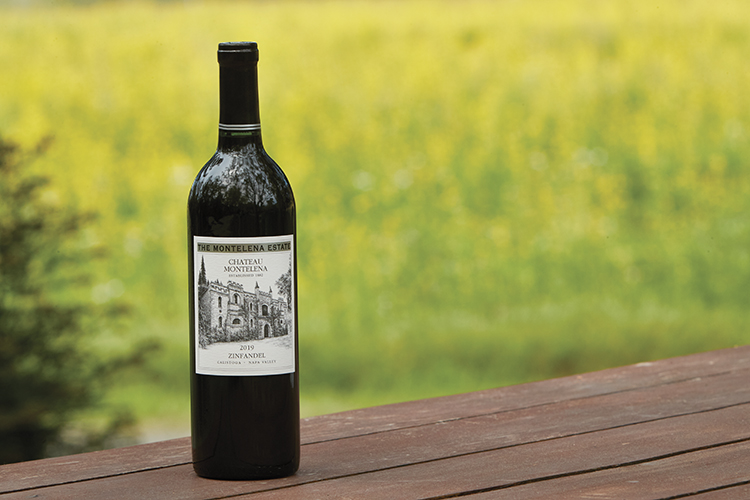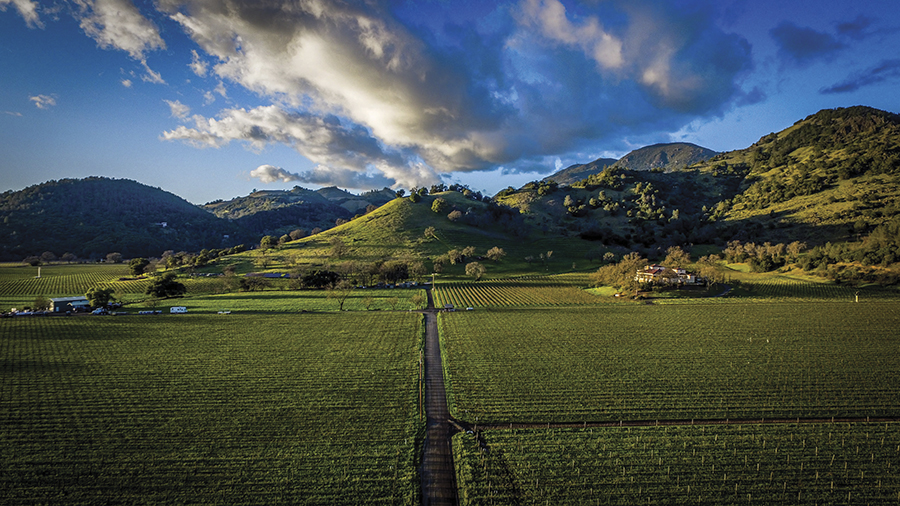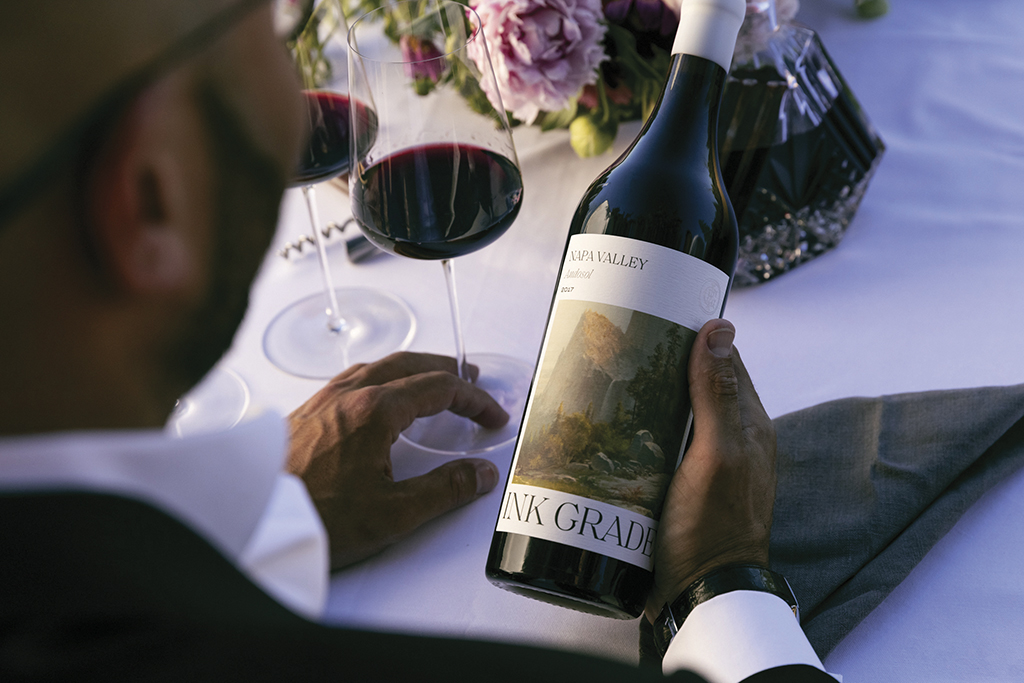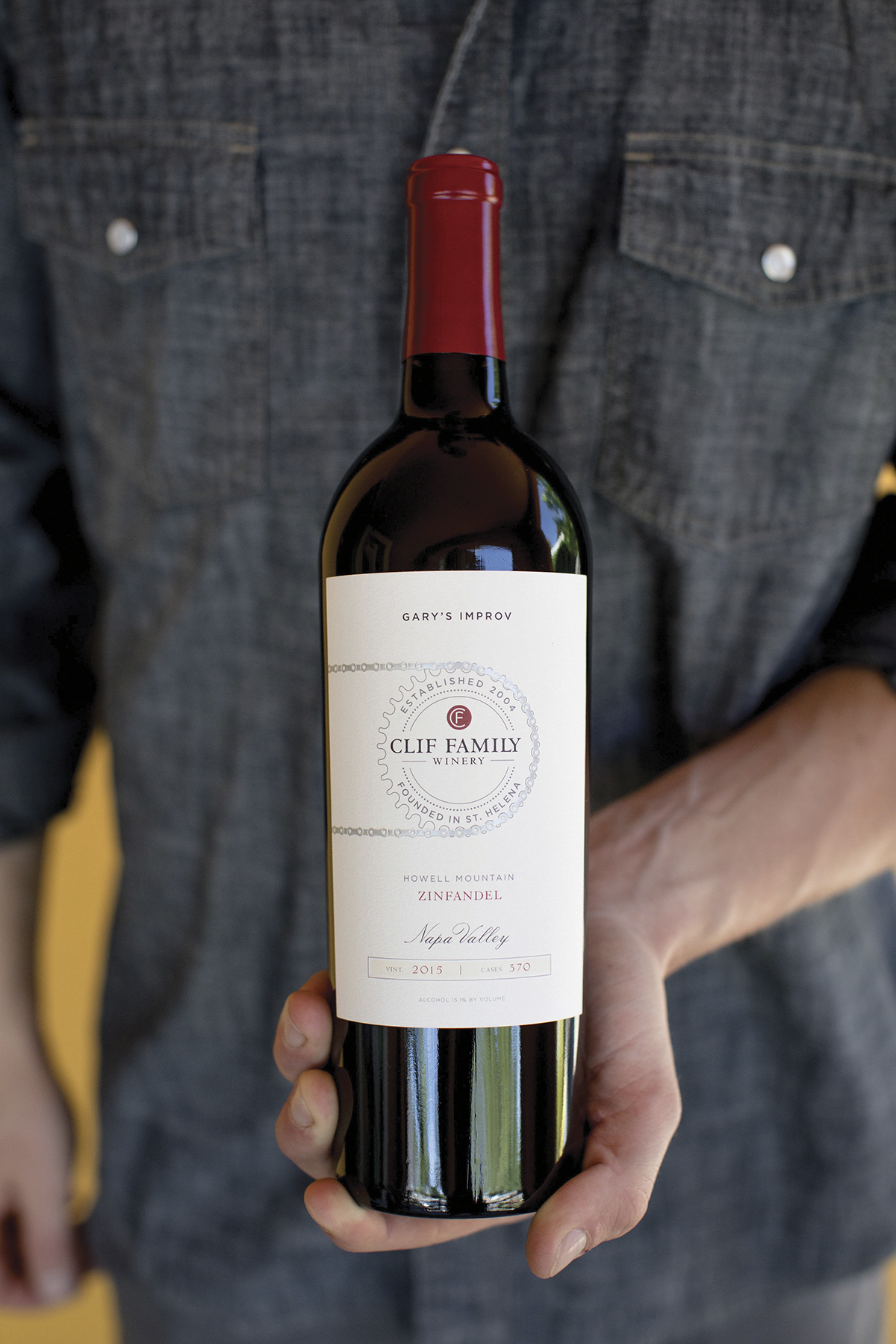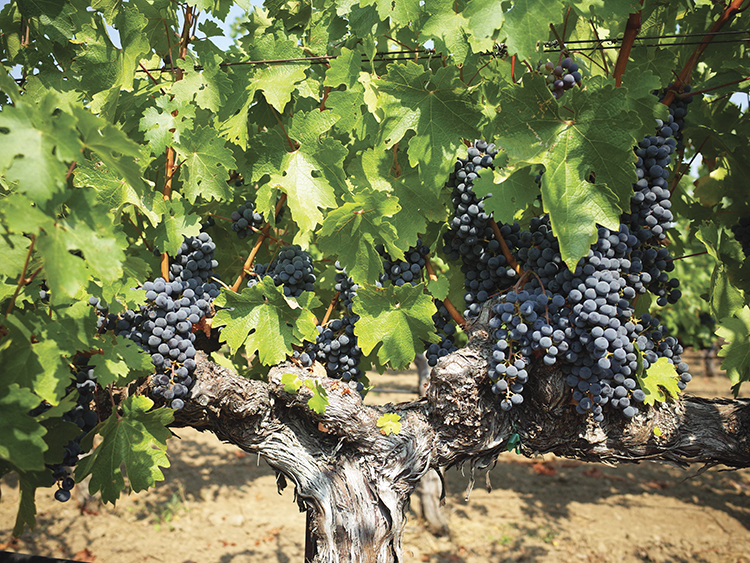by Melissa Vogt | Photo above courtesy of Chateau Montelena
Zinfandel vines have been rooted in California soils since the mid-1880s as far south as Paso Robles and as far north as Napa Valley and Sonoma County. Its commonly referred to as the state’s heritage grape variety, as it was historically planted by immigrant farmers and continues to boast the oldest vine age across the state.
Hungarian immigrant Agoston Haraszthy is believed to be the first to bring Zinfandel to California in the 1850s. The grape became popular, and because it was ideally suited to the California climate, it was widely planted, with winemakers often crafting the variety in an Italian-style field blend (blended with small portions of other grape varieties).
Unfortunately, while Prohibition paused grape growing, post-Prohibition Zinfandel didn’t gain back the traction that it once had in the Valley, and it was widely replaced by other varietals as time elapsed. This especially played out as Napa entered the golden age of Cabernet Sauvignon, following the famous 1976 Judgment of Paris wine tasting that brought this Bordeaux varietal to the region’s forefront.
Present-day Napa Valley winemakers like Robert Biale and Matt Taylor have remained steadfast in their commitment to local Zinfandel. They have opted to preserve the grape as California’s heritage variety and, along with a handful of other local winemakers, are crafting some of the most quality-driven and affordable bottles of wine in Napa Valley—Zinfandel with great finesse, structure, and approachability.
From Mountaintops to Valley Floor
In the world of wine, there’s almost nothing more beautiful than head-trained Zinfandel vineyards. The majestic way the vines stand solitary and wild with vine shoots often reaching in all directions. The long, gnarly rows stretch from the present day to a deeply rooted past, telling the tale of a historic grape variety that fell out of fashion.
But those who know and love Zinfandel know of the local producers who work to keep Zinfandel vines rooted—these are the winemakers who understand how exceptional the variety is. For some, separating Zinfandel from Napa Valley soils is heresy. “We planted Zinfandel on terraced slopes lower on the mountain ranging from 1,000 to 1,400 feet in elevation,” said Matt Taylor, winemaker at Ink Grade. “To be frank, growing Zinfandel on low-yielding terraces with very high farming costs is a good way to lose a lot of money, but Zinfandel is an inseparable part of the Howell Mountain identity. It would be a crime to rip it out.” In the appellation of Howell Mountain, Zinfandel rootstock grows deep and lends itself well to dry farming and deficit irrigation. “It thrives up in the hills, such as the Howell Mountain AVA, where the sun is always shining above the fog,” added Laura Barrett, winemaker at Clif Family Winery.
At Ink Grade, Taylor makes a Howell Mountain expression blended with a smidge of Cabernet Sauvignon (12%) to offer a balanced and genuinely noteworthy Zinfandel. “Zinfandel makes compelling wine in poor and restrictive soils to be certain,” Taylor stated. His Andosol bottling draws inspiration from the historic field-blend style in which the varietal was first crafted. “Historically, Zinfandel was rarely bottled by itself. Instead, it is a part of a culture of blending,” he added.
Clif Family Winery’s Gary’s Improve bottling is 100% Zinfandel and also hails from Howell Mountain—an appellation that enunciates the greatness of this varietal in Napa Valley soils. “It’s fruit-driven and robust yet balanced and can be an early-drinking varietal,” said Barrett. “Zinfandel continues to be an anchor wine in our portfolio.” The Clif Family Winery Howell Mountain estate site is organically farmed and produces an expression with great acidity and a rich backbone. “Zinfandel is less tannic than the traditional Bordeaux varietals with more red fruit aromas and flavors, quite the contrast to Cabernet Sauvignon, which often shows off its darker fruit qualities and more forward-facing tannins,” Barrett stated.
Further south and on the valley floor, estates like Inglenook and Elyse Winery are also producing stunning Zinfandel. “Zinfandel likes to grow deep roots and can produce too much crop and lack intensity if it is planted in overly fertile soils,” said Willi Sherer, Master Sommelier and member of the Elyse Winery hospitality team. “Napa is blessed with moderately fertile soils and enough sunshine to ripen Zinfandel well.”
The Zinfandel vines at Elyse Winery are rooted in Rutherford at the historic Morisoli Vineyard, which dates to 1880. The vineyard’s Zinfandel was originally planted from 1902 to 1908. In this sweet-spot site of the Rutherford bench, “Napa Zinfandels have a balance and harmony that avoid the overly jammy, cooked-fruit characters that other classic Zinfandel regions can have,” Sherer said. At the neighboring Inglenook, their Edizione Pennino Zinfandel is crafted from a host of vineyards at their Rutherford estate. It is made up of primarily Zinfandel (95%) with some Primitivo (4% ) and Petite Sirah (1%), showing off plushness and balance.
Producing some of the most iconic Zinfandel in modern-day Napa Valley is, without a doubt, Robert Biale Vineyards. The estate is dedicated to crafting single appellation, single vineyard Zinfandels from Napa’s most historic sites, and perhaps most endeared for producing its Black Chicken label (named after the vineyard and wine secretly produced and sold by Robert’s father, Aldo, during Prohibition). While the public wines sell out quickly, and many in the collection are member-only wines, one bottling is still available for those who are not members. The 2019 R.W. Moore Vineyard Zinfandel from Coombsville is an impressive offering. The vineyard is the oldest site in Coombsville, initially planted in 1905 and some of the original vines still exist today. It is the only vineyard site planted to Zinfandel in this appellation and produces a truly inimitable wine.
Whether palate preference leans toward bright and structured or darker-fruited and more voluptuous, small-production Napa Valley Zinfandel offers a unique combination of balance, complexity, and approachability that makes their vineyard sites worth preserving.
For the Zin Lover
Chateau Montelena, 2019 Estate Zinfandel
A smooth and sensuous Zinfandel, Chateau Montelena shows what warmer climate Napa Zins can do. It boasts a full body with notes of ripe strawberry and spiced plum.
Clif Family Winery, 2020 Gary’s Improv Zinfandel
This Zinfandel is bright and fresh with flavors of chocolate-covered cherry and an herbal backbone with sage and black pepper.
Elyse Winery, 2019 Morisoli Vineyard Zinfandel
The Elyse offering from the famous Morisoli Vineyard expresses bright fruit with a lot of spice. Spiced plum and cranberries give this Zinfandel a pleasant holiday fruit cake vibe.
Inglenook, 2019 Edizione Pennino Zinfandel
Inglenook’s Edizione Pennino Zinfandel is generous in the mouth with a luscious texture and dark flavors of blackberry with abundant clove. It’s well-crafted and will be long-lived.
Ink Grade, 2017 Andosol Zinfandel
This Zinfandel is balanced with loads of complexity and structure, showing notes of raspberry, plum, and abundant spice. This is a lovely Zinfandel that will hold its own through the years.
Robert Biale Winery, 2019 R.W. Moore Vineyard Zinfandel
Biale shows off this historic vineyard in a rich and savory style with dark notes of blackberry, blueberry, and hints of umami-rich soy.

